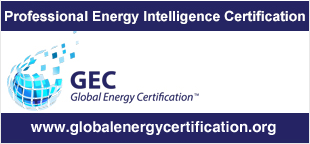Below is a summary of the table of contents for NRG Expert’s water desalination market research report. The report looks at ‘what is desalination, what is water stress and what are the key statistics and countries which are adopting desalination? The market research outlines key desalination data, analysis and forecasts. As well as providing the desalination report, we can also provide key data from our energy database and consultancy on the desalination market place.
>> Download the Desalination Market Research Brochure
>> Go Back to the Desalination Report Overview
Executive Summary 10
1. Water Desalination Technologies 12
Thermal 12
Multistage Flash 12
Multi Effect Water Distillation 13
Vapour Compression (VC) 14
Membrane 15
Reverse Osmosis 15
Forward Osmosis 22
Electrodialysis 24
Cogeneration 27
Hybrid Systems 27
Membrane Distillation 29
Intake system 30
Water Waste Management 32
Energy Recovery Devices 32
Mobile Water Desalination Plants 32
Seawater Water Desalination Vessels 33
Siting 33
2. Renewable Energy-Powered Desalination 35
Solar 38
Solar PV 39
Solar Thermal 40
Wind 42
Geothermal 44
Medring 45
Biomass/Biofuel. 46
Ocean Technology 46
Ocean Thermal Energy Conversion 46
Wave 48
Salinity Gradient 49
Hydroelectric 49
Nuclear 49
3. Future Water Desalination Technologies 52
Processes 53
Membranes 55
4. Environmental Impact of Water Desalination 56
5. Water Stress, Surplus and Users 59
Water Stress and surplus 59
Water Users 64
6. Private and Public Sector Participation 67
7. Water Types 74
8. Current Desalination Market 77
9. Global Picture 81
10. Countries – Desalination Analysis 83
11. Middle East 84
Israel and the Palestinian Territories. 84
Jordan 90
Syria 91
12. Persian Gulf 93
Bahrain 94
Iran 95
Iraq 97
Kuwait 98
Oman 99
Qatar 102
Saudi Arabia 104
United Arab Emirates 112
Yemen 115
13. North Africa 117
Algeria 117
Egypt 119
Libya 121
Morocco 123
Southern Sudan 124
Sudan 124
Tunisia 124
14. Southern Africa. 127
Angola 127
Cape Verde 127
Chad 127
Equatorial New Guinea 127
Ghana 128
Kenya 128
Namibia 128
Nigeria 129
South Africa 129
Tanzania 131
Zambia 131
15. Asia Pacific 132
Australia 132
New South Wales 139
Queensland 140
Southern Australia 141
Victoria 141
Western Australia 141
Research 142
China 145
India 148
Chennai 150
Delhi 151
Mumbai 151
Gujarat state 151
Lankshadweep Islands 151
Orissa state 151
Indonesia 152
Japan 152
Research 154
Maldives 154
Pacific Islands 155
Pakistan 155
Papua New Guinea 156
Philippines 157
Seychelles 157
Singapore 158
South Korea 159
Taiwan 161
Thailand 161
16. North America 163
Bermuda 163
Canada 163
Mexico 163
USA 165
California 169
Florida 171
Massachusetts 173
New Mexico 173
New York 174
Texas 174
Research 178
17. Caribbean 179
American Virgin Islands 179
Anguilla 179
Aruba 179
Barbados 180
British Virgin Islands 180
Cayman Islands. 180
Cayman Islands. 180
Cuba 180
Dominican Republic 181
Haiti 181
Netherland Antilles 181
Puerto Rico 181
St Vincent 182
Trinidad and Tobago 182
US Virgin Islands 182
Other Countries 182
18. South America 183
Argentina 183
Ascension Island 183
Brazil 184
Bolivia 186
Chile 186
Colombia 188
Ecuador 188
Honduras 189
Peru 189
Venezuela 189
19. Europe 191
Belgium 191
Bulgaria 192
Cyprus 192
Denmark 193
France 193
Germany 193
Greece 194
Ireland 195
Italy 195
Malta 196
Poland 196
Portugal 196
Romania 197
Russia 197
Spain 197
Turkey 200
United Kingdom 201
20. CIS 203
Afghanistan 203
Azerbaijan 203
Kazakhstan 203
Turkmenistan 204
Uzbekistan 204
21. Costs 205
Thermal versus Reverse Osmosis 206
Brackish versus Seawater Reverse Osmosis 207
Seawater Reverse Osmosis 207
Costs and Projections 208
Costly Projects 210
22. Future Markets – Water Market Forecasts 212
23. Market Value 214
24. Barriers 216
25. Companies in Desalination Market 217
Top Ten Players in Desalination Market 218
Veolia 218
Doosan 219
Fisia Italimpianti 221
GE Water 221
Suez Environnement 222
IDE Technologies 222
Acciona 233
Befesa Agua 235
Hyflux 238
Biwater 239
Other Players 240
Cadagua 240
Wabag 243
Membranes 246
Dow Filmtec 247
Fluid Systems 247
Hydranautics 247
Osmonics 248
Rochem 248
Toray 248
Toyobo 249
Other companies 249
Norit 249
Osmoflo 249
Energy Recovery 250
Energy Recovery Inc 250
Fedco 253
Flowserve 253
26. Other Water Desalination Technologies 254
Pros and Cons of Desalination 254
Dams 254
River Basin Transfers 254
Water Conservation and Demand Management 254
Water Reuse 254
Water Imports 255
Long-Distance Water Piping/Transport 255
Tables- Desalination Statistics and Data
Table 1-1: Comparison of membrane materials 16
Table 1-2: Comparison of cellulose, composite polyamide and thin film materials 17
Table 1-3: Energy consumption by desalination technology 19
Table 1-4: Project cost comparison for a 190,000 m3 per day seawater reverse osmosis plant 20
Table 1-5: Comparison of different filtration and membrane systems 21
Table 1-6: Comparison of the different desalination technologies 25
Table 1-7: Benefits of different hybrid configurations 28
Table 1-8: Capacity, size and weight of containerised mobile desalination units 33
Table 2-1: Comparison of different renewable sources for water desalination 36
Table 2-2: Development stages of the main renewable energy desalination technologies 37
Table 2-3: Possible combinations of renewable energy with water desalination technologies 38
Table 2-4: Examples of pilot solar desalination projects 41
Table 2-5: Pilot wind desalination projects and hybrids 43
Table 3-1: Recent water desalination innovations 52
Table 3-2: Desalination needs and opportunities 53
Table 5-1: Water scarce countries 59
Table 6-1: Types of public and private sector participation in the water desalination industry 67
Table 6-2: Water Desalination contracts 68
Table 6-3: Typical water desalination contracts in major markets 68
Table 6-4: Key decision makers for desalination plant applications in countries with a significant or potentially significant water desalination market 69
Table 8-1: Drivers and restraints on desalination growth 79
Table 8-2: Summary of factors facilitating seawater desalination. 79
Table 12-1: Cumulative investment in water desalination in selected MENA countries, using 2004 prices as a baseline, USD billion 94
Table 15-1: Large and medium-sized current and proposed desalination plants in Australia 135
Table 21-1: Factors that affect desalinated water costs 205
Table 21-2: Distribution of cost factors in desalination 207
Table 25-1: Top water desalination companies in terms of total capacity 217
Table 25-2: Overview of suppliers of RO membranes 246
Figures– Desalination Statistics and Data
Figure 1-1: Summary of water desalination processes 12
Figure 1-2: Diagram of Multistage Flash distillation plant 13
Figure 1-3: Diagram of Multi Effect Distillation plant 13
Figure 1-4: Diagram of Vapour Compression desalination plant 14
Figure 1-5: Diagram demonstrating the principles of osmosis 17
Figure 1-6: Diagram demonstrating the principles of reverse osmosis 17
Figure 1-7: Flow diagram of a reverse osmosis system 18
Figure 1-8: Diagram of a cross-flow membrane compared to a conventional membrane 19
Figure 1-9: Application Ranges of Separation Membranes 21
Figure 1-10: Cumulative installed seawater reverse osmosis capacity with ultra-filtration pre-treatment, m3 per day 22
Figure 1-11: Diagram demonstrating the principles of forward osmosis 23
Figure 1-12: FO/RO Hybrid 23
Figure 1-13: Diagram of Electrodialysis desalination 24
Figure 1-14: Typical hybrid plant set up 27
Figure 1-15: Membrane distillation process flow 29
Figure 1-16: Shipboard Desalination 33
Figure 2-1: Support for renewable energy-powered desalination 35
Figure 2-2: Development stage and capacity range of the main renewable energy-desalination technologies 37
Figure 2-3: Solar thermal power plant configuration for (a) electricity generation and for (b) the combined generation of power and water with backup fuel and energy storage 40
Figure 2-4: Wind powered desalination potential in water scarce countries 42
Figure 2-5: Global hotspots for geothermal activity 45
Figure 2-6: The Medring 46
Figure 2-7: Potential sites for OTEC desalination plants: Caribbean, China, India, Northern Australia, South Western American States and Countries in the Persian Gulf 47
Figure 2-8: Wave-powered desalination models 48
Figure 3-1: Conceptual drawing of Thin Film Nanocomposite (TFN) reverse osmosis membranes 55
Figure 4-1: Carbon emissions of water produced in cogeneration plants, kg CO2 per m3 of water produced 57
Figure 5-1: Percentage of population facing severe water stress, 2007 and 2030 60
Figure 5-2: Proportion of renewable water resources withdrawn (MDG water indicator): surface water and groundwater withdrawal as percentage of total actual renewable water resources, 2001 60
Figure 5-3: Global water needs including potential climate change/pollution-driven change, 2005 to 2030, km3 61
Figure 5-4: Aggregated global gap between existing accessible, reliable supply (1) and 2030 water withdrawals, assuming no efficiency gains, 1,000 billion m3 62
Figure 5-5: Water footprint for different energy sources 65
Figure 8-1: Growth in contracted and commissioned desalination capacity by period, % 77
Figure 8-2: Annual growth in new contracted and commissioned desalination capacity by year, 2000 to 2010, % 78
Figure 9-1: Total water desalination capacity by country, m3 per day 81
Figure 11-1: Government targets for annual desalination production capacity, million m3 per year 86
Figure 11-2: Seawater desalination in each desalination facility in Israel in 2010 and 2014, million m3 per year 87
Figure 11-3: Planned seawater desalination capacity from 2004 to 2020, m3 per day 87
Figure 11-4: Cost comparison of large-scale seawater reverse osmosis desalination plants built between 1997 and 2010, USD per m3 89
Figure 12-1: Share of combined water and power in power-generation capacity additions in selected MENA countries, 2004 to 2030, GW 93
Figure 12-2: Water demand in Saudi Arabia, Kuwait, the UAE, Qatar, Algeria and Libya (not including agricultural), million m3 93
Figure 12-3: SWCC desalination plants and status 106
Figure 12-4: Growth in annual water and electricity production, 1980 to 2009, million m3 and million MWh 108
Figure 15-1: Rainfall percentages, January to May 2010 134
Figure 15-2: Water Desalination capacity in different states and territories, 2008 and 2013 136
Figure 15-3: Australian desalination sites, outlook to year 2013 136
Figure 15-4: Cost of recent desalination projects, m3 per day 137
Figure 16-1: Location and extent of saline aquifers 167
Figure 16-2: US drought monitor, December 2008 168
Figure 19-1: Simulated land average maximum number of consecutive dry days for different European regions: 1860 to 2100 191
Figure 21-1: Estimated seawater reverse osmosis desalination plant construction costs as a function of capacity, USD million per million gallons per day capacity 205
Figure 21-2: Typical costs for a very large salt water thermal desalination plant 206
Figure 21-3: Costs of water production for a 100,000 m3 per day seawater RO desalination plant 206
Figure 21-4: Present and project costs for desalinated water from seawater reverse osmosis plants, USD per m3 209
Figure 21-5: Cost of water by source, USD per m3 210
Figure 22-1: Predicted growth in desalination capacity, billion m3 per day. 212
Figure 22-2: Worldwide installed desalination capacity, million m3 per day 212
Figure 23-1: Global water market forecast for seawater and brackish water desalination plants, 2005 to 2015, USD billion 214
Price: £1,050.00
Prod. Code: NRGDR1
>> Download the Desalination Market Research Brochure

















